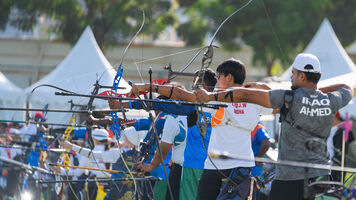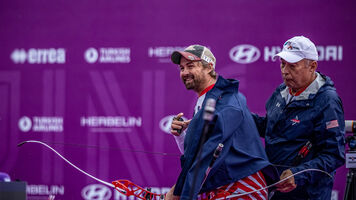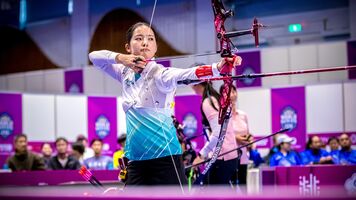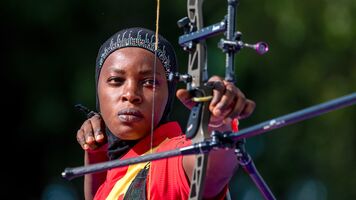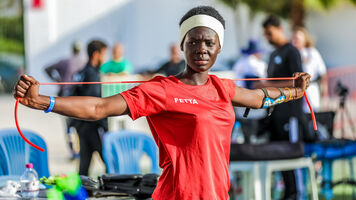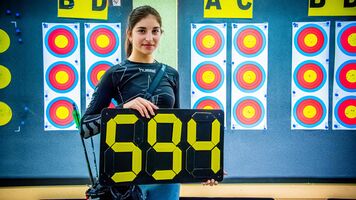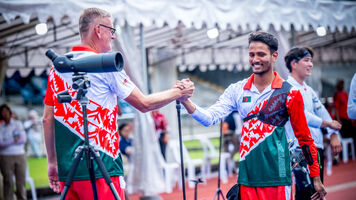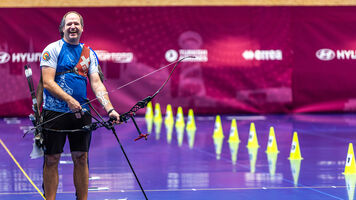Beginners guide to archery at the Birmingham 2022 World Games
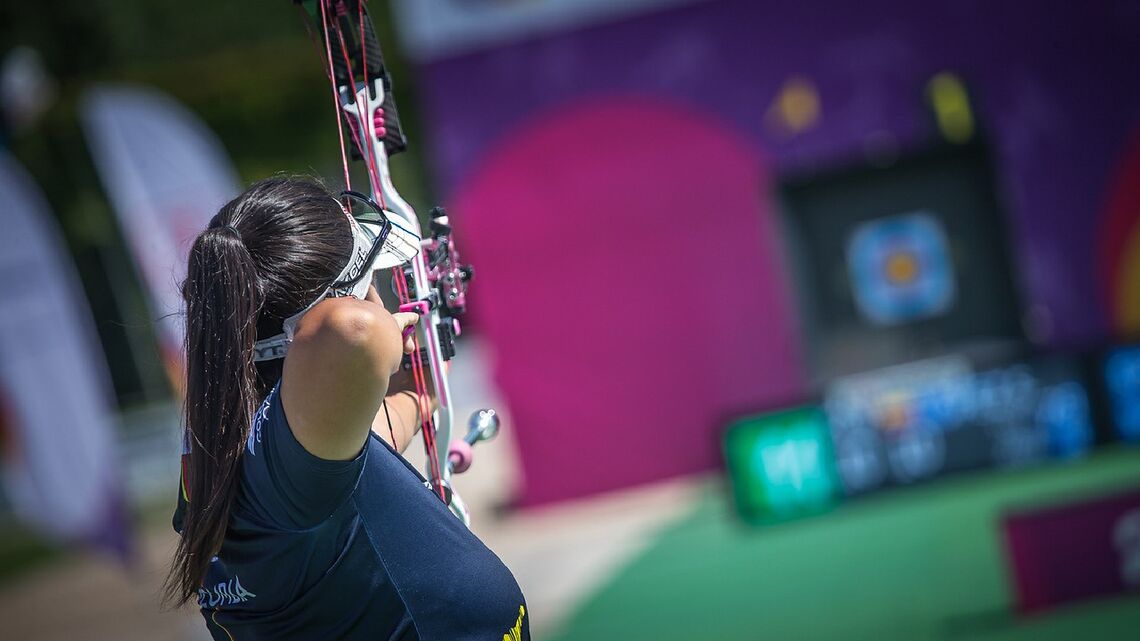
Archery returns to a world multisport event this week as 100 archers – across compound, recurve and barebow divisions – prepare to compete at the World Games in the southern US city of Birmingham, Alabama.
Originally an all-field archery event, the compound competition was moved to the discipline of target archery in 2013. Since then, the World Games have been known as the equivalent of the Olympics for the bowstyle – and are credited with driving much of the growth that led to compound’s recent application to join the programme of LA28.
Sara Lopez, who’s barely hanging on to her number one spot in the world rankings, returns in Birmingham as reigning compound women’s champion from the last edition held in Wroclaw in 2017.
The field events are bound to intrigue, given that this will be the first major international for the discipline since the last World Archery Field Championships in Cortina in 2018. The subsequent championships, due to be held in Yankton in 2020, were delayed to this year due to the worldwide pandemic. (As were these World Games – from 2021 until 2022.)
Finals from all events will be available to view worldwide (with some restrictions) on the Olympic Channel.
Key information
What’s happening? The archery competitions at the 11th edition of the World Games on 7-15 July 2022 in Birmingham, Alabama, USA.
Where is it? Avondale Park, with finals set around a beautiful lake.
What’s at stake? World Games Champion titles. There are seven in total.
What’s the story? This multisport event is the peak of international competition for barebow and recurve field archers – and compounders in the target discipline. It’s even more significant with the recent announcement of compound’s application to join the LA28 Olympic Games.

Defending champions
View full results from the Wroclaw 2017 World Games.
- Compound men: Stephan Hansen, Denmark (not competing)
- Compound women: Sara Lopez, Colombia
- Compound mixed team: Denmark
- Recurve men: Amedeo Tonelli, Italy (not competing)
- Recurve women: Lisa Unruh, Germany (now retired)
- Barebow men: Istvan Kakas, Hungary (not competing)
- Barebow women: Cinzia Noziglia, Italy
Schedule
- Friday 8 July – Compound qualifying (morning) and eliminations (afternoon)
- Saturday 9 July – Compound final fours
- Sunday 10 July – Recurve qualifying
- Monday 11 July – Recurve shoot-up eliminations
- Tuesday 12 July – Recurve finals
- Wednesday 13 July – Barebow qualifying
- Thursday 14 July – Barebow shoot-up eliminations
- Friday 15 July – Barebow finals
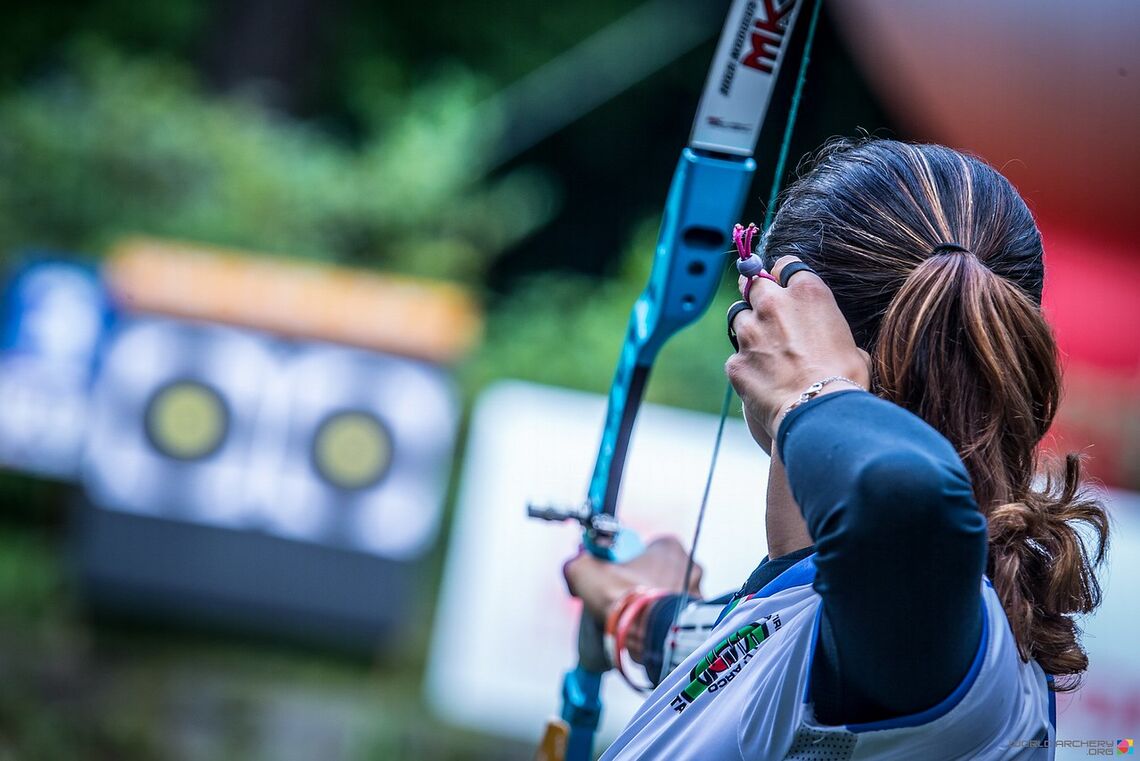
Storylines
1) Swedish triple. Renowned compounder Morgan Lundin won the World Games a record three times (1993, 1997 and 2005) back when it was an all-field archery event. His Swedish teammate, renowned barebow archer Erik Jonsson, won in 2001 and 2005. He has a chance to match Lundin’s win total in Birmingham.
2) Or Italian triple? Jonsson’s not the only one who’s got a shot at a third World Games win, however. Italy’s Giuseppe Seimandi doubled up in 2009 and 2013 – and will also return next week.
3) Mixed team madness. The doubles event has become one of the most intriguing of late, especially in the compound field. There are easily five or six pairs who could be counted as real contenders for the title in Birmingham, including reigning World Archery Champion Colombia, ever-dangerous Denmark and, of course, the host USA.
But what about India collecting its first-ever archery medal at the multisport event? Abhishek Verma and Jyothi Surekha Vennam won the most recent stage of the Hyundai Archery World Cup in Paris and have looked dangerous as a partnership.
4) One he’s missing. Former world number one Brady Ellison has won pretty much every major world tournament going, except the Olympic Games and the World Games. He’s collected back-to-back silvers at the last two editions – in Cali in 2013 and Wroclaw in 2017 – and, as a self-confessed field archery fan, it’s a title he’d rather not miss out on.
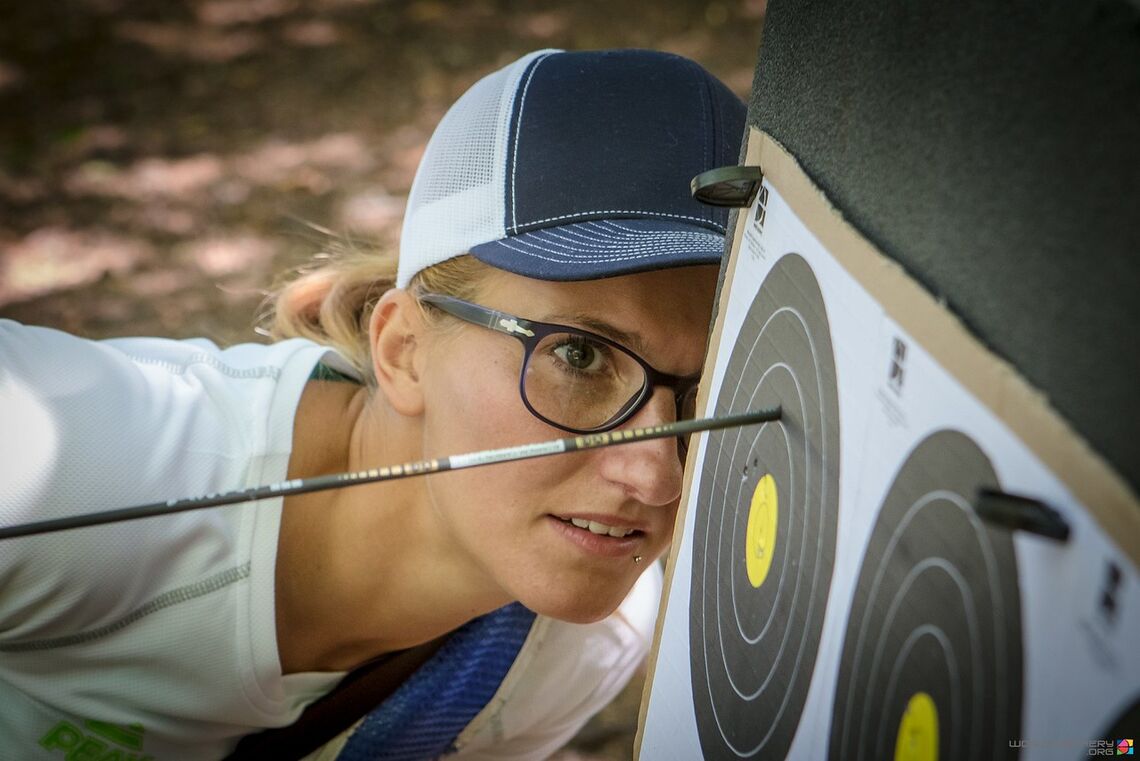
The line-up
These are the nations that will compete for each of the seven gold medals. The full list of entries was announced last week.
Compound men: Australia, Austria, Canada, Colombia, Denmark, El Salvador, Estonia, France, Germany, India, Iran, Kazakhstan, Korea, Mexico, Netherlands, New Zealand, Poland, Slovakia, South Africa and the USA.
Compound women: Belgium, Chile, Colombia, Croatia, Denmark, El Salvador, Great Britain, India, Iran, Korea, Mexico, Netherlands, New Zealand, Puerto Rico, Slovenia, South Africa, Spain and the USA.
Recurve men: Croatia, Czech Republic, France, Germany, Great Britain, Italy, Japan, Slovenia, Spain, Sweden and the USA.
Recurve women: Czech Republic, France, Germany, Great Britain, Italy, Netherlands, Slovakia, Slovenia, Switzerland and the USA.
Barebow men: Austria, France, Germany, Great Britain, Hungary, Italy, Norway, Slovenia, Spain, Sweden and the USA.
Barebow women: Austria, Finland, France, Germany, Great Britain, Ireland, Italy, Slovenia, Spain, Sweden and the USA.
Disciplines
Compound archers at the World Games compete in the discipline of target archery. Recurve and barebow archers at the World Games compete in the discipline of field archery.
Target archery is the discipline of shooting at stationary circular targets set at specific distances. Compound archers at the World Games compete over a distance of 50 metres at targets measuring 80 centimetres in diameter.
Competition has two phases: qualification, in which compound archers shoot 72 arrows for total score to earn a seeding, and matchplay, where athletes compete in head-to-head eliminations. Individual matches are decided on total score over 15 arrows and mixed team matches over 16 arrows.
Field archery is the discipline of shooting at stationary circular targets of different sizes set at varying distances, heights and angles around a course of natural terrain.
Competition has three phases: qualification, in which archers shoot a course of 12 marked and 12 unmarked* targets set at distances between five and 60 metres to earn a seeding, shoot-up eliminations, in which athletes are divided into two sudden-death matchplay pools. The winners of the two pools join the top two seeds in the semifinals. Matches in the pools are decided over six marked targets while matches in the semifinals and finals use four marked targets.
Tied matches in both target archery and field archery are decided in single-arrow shoot-offs.
*Athletes are not given the distance of the target.
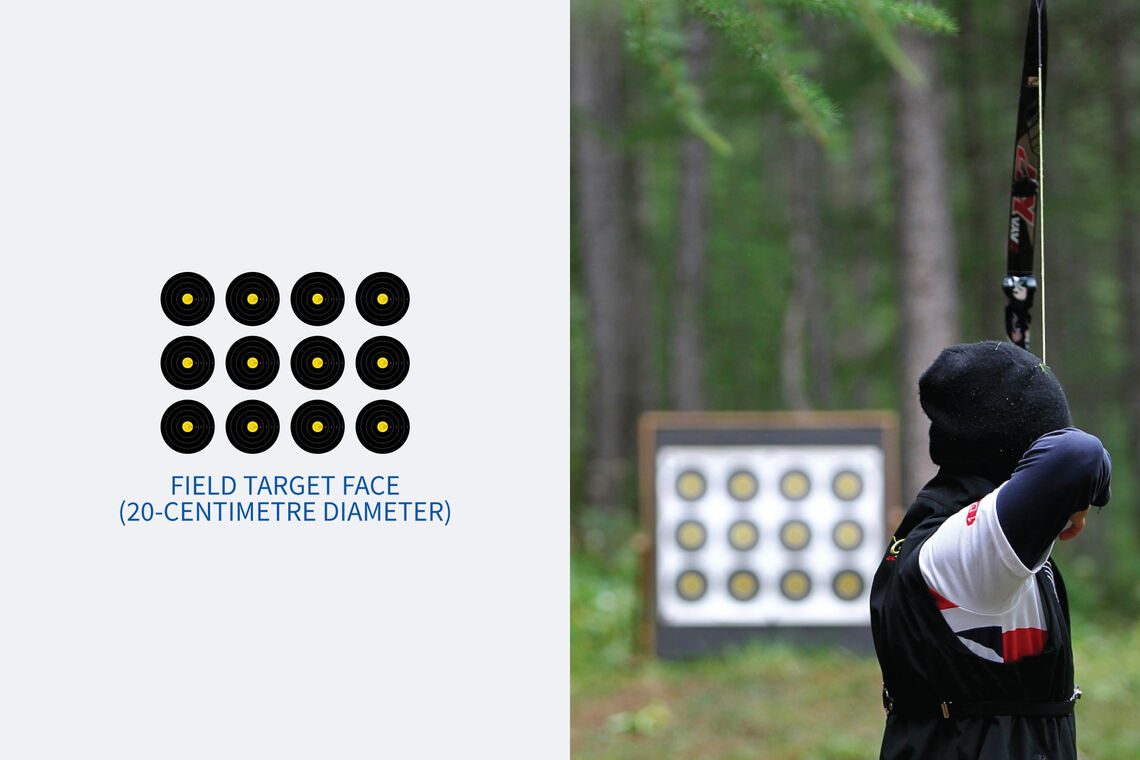
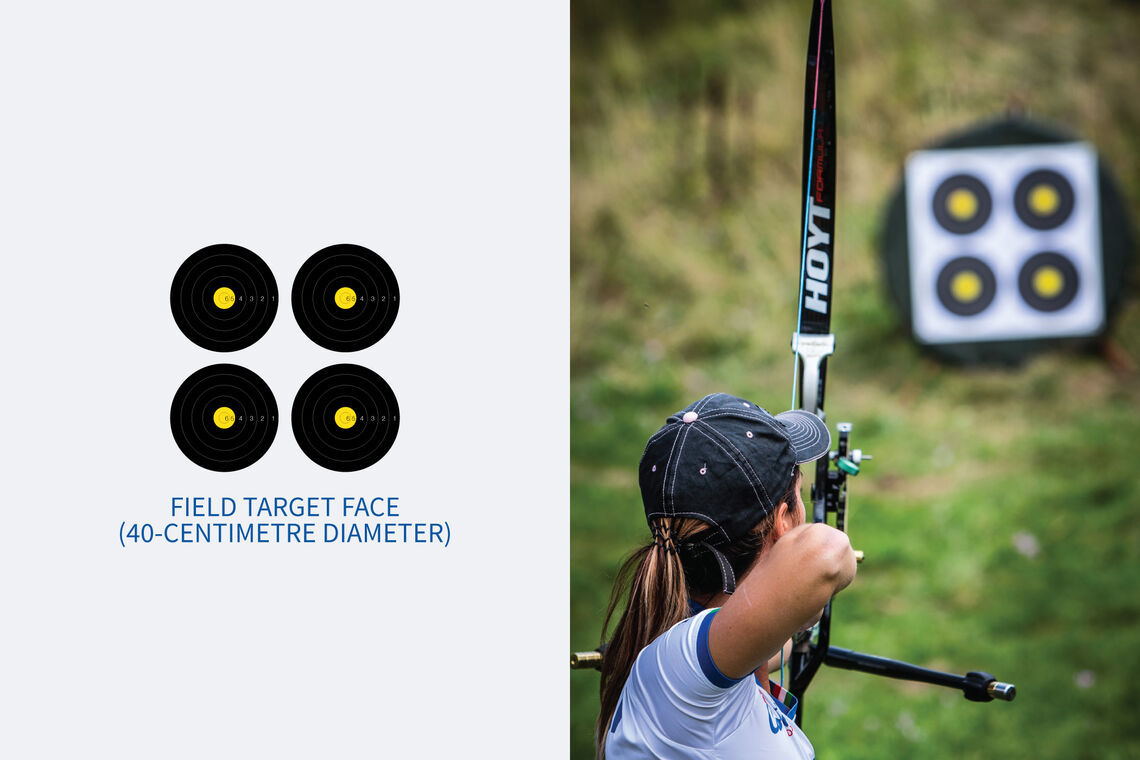
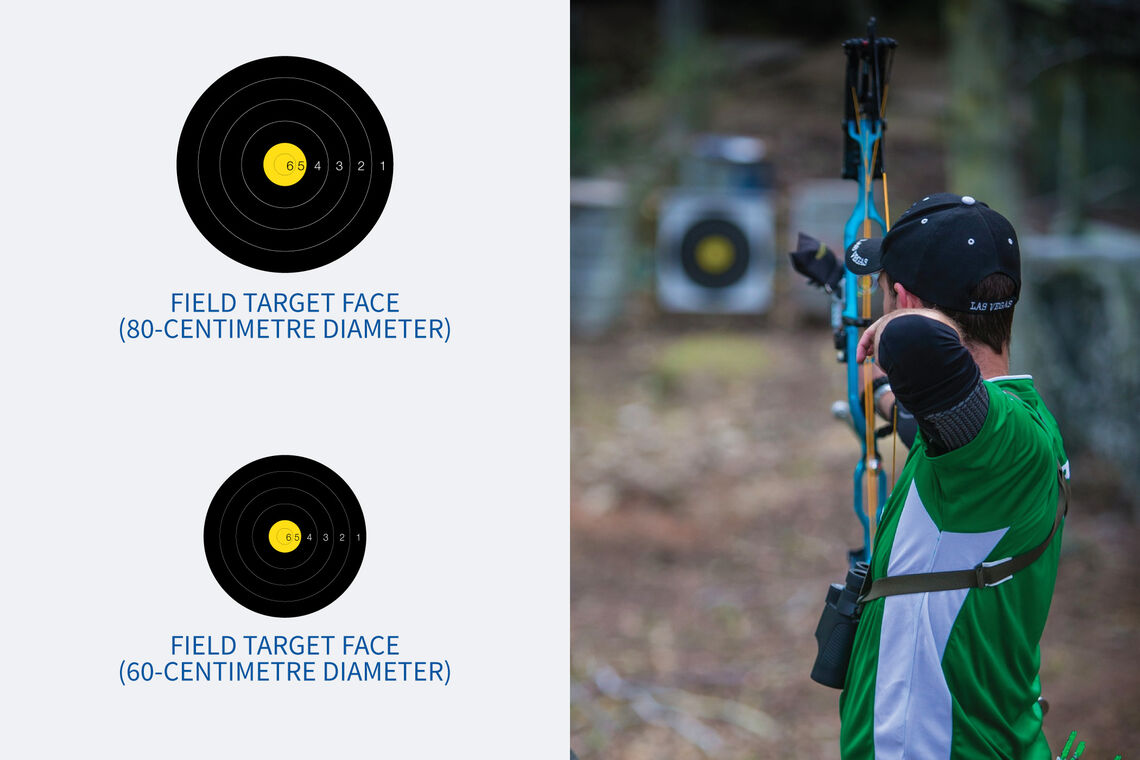
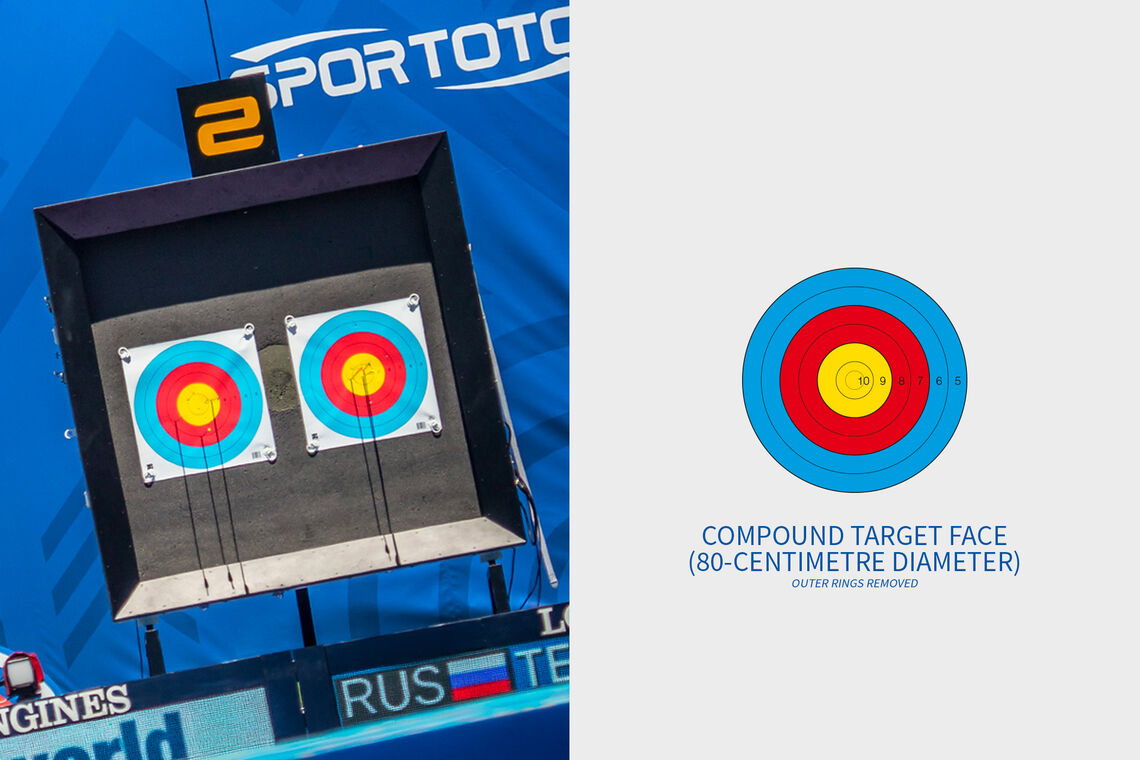
Targets
The types of target used for the target archery and field archery at the World Games are distinctly different.
Target archery uses a traditional five-colour 10-ring archery target – hence the name of the discipline – which measures 80 centimetres in diameter. The inner yellow rings score 10 and nine points, red rings score eight and seven points, blue rings score six and five points, black rings score four and three points, and outer white rings score two and one points. The 10-ring measures just eight centimetres in diameter.
Due to the accuracy of elite compound archers, the black and white rings are removed for international competition.
Field archery uses black and yellow targets set around a course of natural terrain (similar to golf). The targets can measure 80, 60, 40 or 20 centimetres in diameter, depending on the distance at which they are set, and have six rings. The inner yellow rings score six and five points, and the black rings score four to one points.
Recurve archers shoot targets set at distances between 10 and 60 metres, while barebow archers shoot targets set at distances between five and 50 metres.
Equipment
Archers competing at the World Games use a compound bow, recurve bow or barebow. Compound archers compete in the discipline of target archery, while recurve and barebow archers compete in the discipline of field archery.
The compound bow was invented in the 1960s as a more mechanically efficient piece of archery equipment. The design uses a levering system of pulleys and cables, making it faster and decidedly more accurate than other types of bow. Archers also use mechanical release aids and magnified sights. Compound has featured at the World Games since 1993, two years before the bow was added to the World Archery Championships, and the competition was moved from the discipline of field archery to target archery in 2013.
The recurve bow is the modern evolution of traditional bows that have existed for 1000s of years. The limbs positioned at the top and bottom of the bow curve back away from the archer at each tip. This is what gives the ‘re-curve’ its name. Recurve has been the bowstyle used at the Olympic Games since archery’s reintroduction to the programme in 1972.
The barebow is a basic style of recurve bow, which uses the same modern materials but does not permit accessories to aid in aiming or stabilisation. Barebow was included on the programme of the first World Archery Field Championships in 1969 and has featured (alongside recurve) on the programme of the World Games since 1985.


